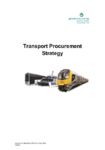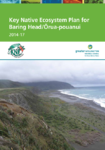-
Waikanae Estuary: Intertidal sediment monitoring 2013/14
This summary card presents the findings of sedimentation rate monitoring at one site in the Waikanae River Estuary undertaken in January 2014. The methods used were based on an extension…
alarm Published 15 Jul 2014 -
Castlepoint Beach: Fine scale monitoring 2013/14
This report presents the findings of the third intertidal beach condition survey undertaken in January 2014. The key indicators used for assessing beach condition were habitat mapping, sediment grain size,…
alarm Published 15 Jul 2014 -
Peka Peka Beach: Fine scale monitoring 2013/14
This report presents the findings of the first intertidal beach condition survey undertaken in January 2014. The key indicators used for assessing beach condition were habitat mapping, sediment grain size,…
alarm Published 15 Jul 2014 -
Waikanae Estuary: Intertidal macroalgal monitoring 2013/14
This report presents the findings of intertidal macroalgal cover monitoring as a broad scale indicator of nutrient inputs within the Waikanae Estuary undertaken in January 2014.
alarm Published 15 Jul 2014 -
Transport Procurement Strategy
This strategy sets out the strategic context for Greater Wellington Regional Council’s (GWRC) transport procurement. This strategy is a ‘living document’ and will be reviewed when material changes occur.
alarm Published 08 Jul 2014 -
Key Native Ecosystem Plan for Parangarahu Lakes Area 2014-17
The Key Native Ecosystem (KNE) Programme seeks to protect some of the best examples of ecosystem types in the Wellington region by managing, reducing, or removing threats to their values.…
alarm Published 07 Jul 2014 -
Key Native Ecosystem Plan for Baring Head/Ōrua-pouanui 2014-17
The Key Native Ecosystem (KNE) Programme seeks to protect some of the best examples of ecosystem types in the Wellington region by managing, reducing, or removing threats to their values.…
alarm Published 07 Jul 2014 -
State and trends in the diversity, abundance and distribution of birds in Upper Hutt reserves, September 2013
Annual bird monitoring is carried out in a number of Upper Hutt parks and reserves with the aim of monitoring changes in the diversity, abundance and distribution of native birds…
alarm Published 07 Jul 2014 -
State and trends in the diversity, abundance and distribution of birds in Wellington City reserves
Annual bird monitoring is carried out throughout the network of Wellington City parks and reserves with the aim of monitoring changes in the diversity, abundance and distribution of native birds…
alarm Published 07 Jul 2014

